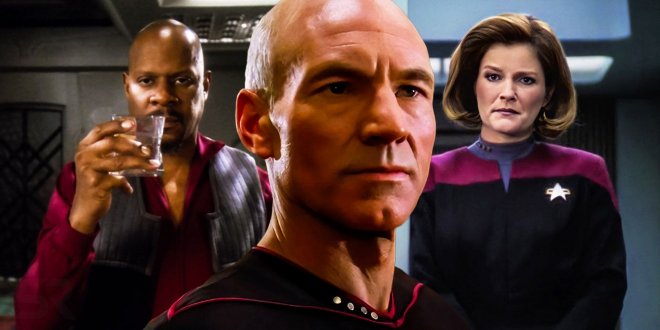
Summary
- Star Trek: Deep Space Nine was initially met with resistance from puritanical fans due to its space station setting and non-Starfleet characters, but these unique elements ultimately made it a standout Star Trek show.
- Despite not being the franchise's flagship show, DS9 paved the way for modern Star Trek by pushing the boundaries of storytelling, leading to arc-based narratives that have influenced shows like Star Trek: Discovery and Star Trek: Lower Decks.
- The network's focus shifted to Star Trek: Voyager as the franchise's new flagship, but DS9's lack of a traditional ship allowed it to break free from the rigid strictures of Roddenberry's original vision, allowing for greater storytelling freedom.
Star Trek: Deep Space Nine was never the franchise's flagship show, which is, ironically, what made it such a great Star Trek series. When DS9 premiered in 1993, it was met with a cool response from Star Trek's more puritanical fans, who took against the space station setting and non-Starfleet characters. And yet, it was these very elements that made Deep Space Nine such a unique and multi-layered Star Trek show that ultimately laid the groundwork for the modern era. DS9 was the first of three Star Trek shows to spinoff from Star Trek: The Next Generation, the franchise's true flagship show, but it never truly succeeded TNG after it ended in 1994.
With the adventures of Captain Jean-Luc Picard (Patrick Stewart) and his Star Trek: The Next Generation crew continuing on the big screen, Star Trek: Deep Space Nine remained in TNG's shadow. When the network were making plans for a third Star Trek show, they made a clear effort to replicate the format of TNG, further marking DS9 out as an anomaly. Premiering in 1995, Star Trek: Voyager was inspired by TNG – most notably the episode "Q Who", in which omnipotent trickster god Q (John de Lancie) catapulted the USS Enterprise-D into the Delta Quadrant. While DS9 remains the more acclaimed Star Trek show, it was clear that Rick Berman and Paramount intended Voyager to be the franchise's new flagship.
Deep Space Nine Was Never Star Trek's Flagship Show  Star Trek: The Next Generation had the USS Enterprise, so it was always going to be the franchise's flagship show while it was still in active production. Just as TNG had initially struggled to escape the shadow of its predecessor, so too did Star Trek: Deep Space Nine. Set aboard a space station, DS9 often had to rely on the exploration and adventure landing on their door step, rather than seeking out strange new worlds. This change in the format didn't immediately enamor fans to DS9, but it was a wise move to firmly establish itself as something unique.
Star Trek: The Next Generation had the USS Enterprise, so it was always going to be the franchise's flagship show while it was still in active production. Just as TNG had initially struggled to escape the shadow of its predecessor, so too did Star Trek: Deep Space Nine. Set aboard a space station, DS9 often had to rely on the exploration and adventure landing on their door step, rather than seeking out strange new worlds. This change in the format didn't immediately enamor fans to DS9, but it was a wise move to firmly establish itself as something unique.
When Star Trek: The Next Generation ended in 1994, it was perhaps suspected that, as the senior show, Star Trek: Deep Space Nine would succeed TNG as franchise flagship. This wasn't really the case, however, at least not in the eyes of the network. As with their Star Trek: The Original Series counterparts, the TNG crew went off to launch an – admittedly less successful – movie franchise, with DS9 holding the fort on TV. As if to add insult to injury, Commander Benjamin Sisko (Avery Brooks) was still without a Starfleet promotion when TNG ended. With TNG gone, the network was clearly crying out for a more "traditional" Star Trek show, and they found one in Star Trek: Voyager.





